IARRP team proposes grid-based winter wheat yield estimation model using crop models and machine learning
Recently, the Agriculture Green Development Science and Engineering at the Institute of Agricultural Resources and Regional Planning (IARRP) of the Chinese Academy of Agricultural Sciences(CAAS) has developed a grid-based winter wheat yield estimation model. By deeply integrating remote sensing data assimilation and machine learning technologies, they have significantly improved the accuracy of regional winter wheat yield predictions. The related findings, titled " Integrating remote sensing assimilation and SCE-UA to construct a grid-by-grid spatialized crop model can dramatically improve winter wheat yield estimate accuracy ," have been published in the journal " Computers and Electronics in Agriculture ."
Crop yield estimation plays a crucial role in agricultural policy-making, resource allocation, and production practices. However, traditional crop models, while accurate in a small scale, face significant challenges when applied at a regional scale, including high input parameter requirements, data acquisition difficulties, and complex parameter calibration. To overcome these bottlenecks, the research team has proposed a grid-based crop model to construct precise regional winter wheat yield models using multi-source data. They have combined the latest machine learning and remote sensing data assimilation technologies to attempt to achieve higher yield prediction accuracy at a regional scale.
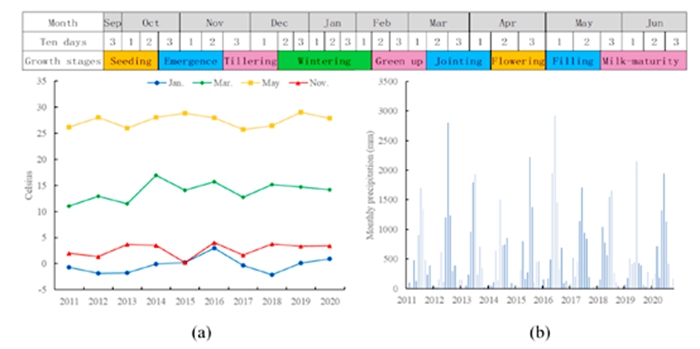
The study involved constructing a 1-kilometer resolution grid-based winter wheat model, dividing the entire study area into several independent grid units where each unit receives inputs of meteorological, soil, and management data for crop growth simulation. Building upon this, the team utilized a machine learning algorithm, the Shuffled Complex Evolution-University of Arizona (SCE-UA), for automatic parameter optimization to enhance the model's adaptability and predictive capabilities. In addition, two remote sensing data assimilation methods were applied: Ensemble Kalman Filter (EnKF) and Four-Dimensional Variational assimilation (4DVar). By incorporating remote sensing Leaf Area Index (LAI) data into crop growth trajectories, the model's simulation results were further corrected and optimized, effectively reducing the uncertainty of the crop model.
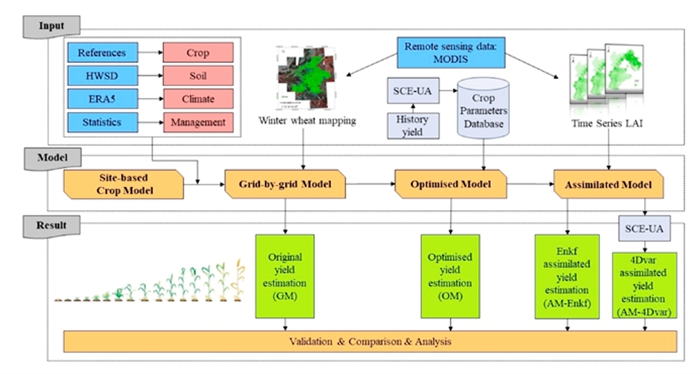
Experimental results demonstrate a significant improvement in winter wheat yield estimation accuracy using this method. Specifically, after parameter optimization and data assimilation, the model's coefficient of determination (R²) increased from 0.53 to 0.94, and the root mean square error (RMSE) decreased from 824.82 kg/ha to 148.48 kg/ha, indicating a substantial enhancement in winter wheat yield estimation accuracy. The study found that among several optimization and assimilation strategies, the combination of SCE-UA and 4DVar yielded the best results, enabling the grid-based model to achieve the highest simulation accuracy.
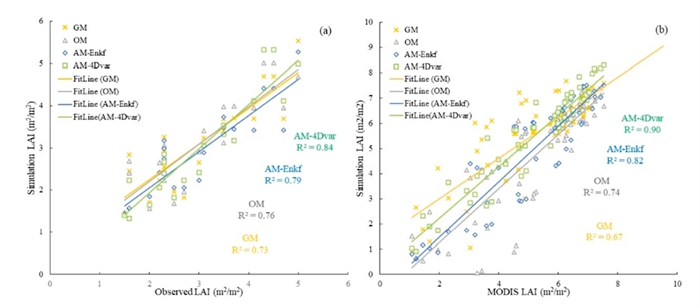
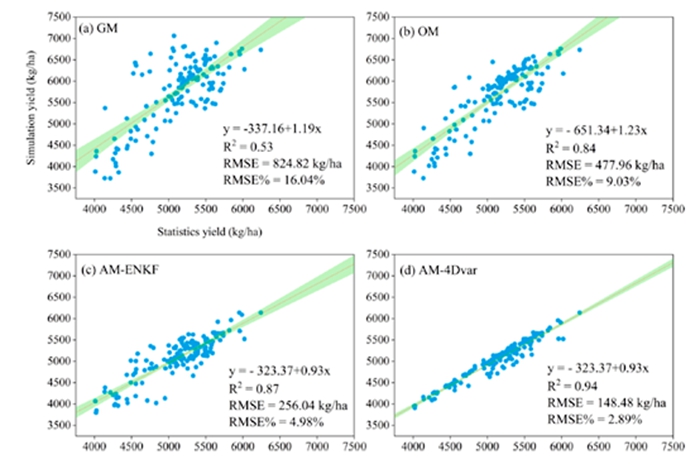
This research outcome holds significant practical value. Firstly, this method effectively addresses the challenge of accurately estimating crop yields at a regional scale with traditional crop models, providing new technical insights for large-scale agricultural production forecasts. Secondly, by simulating annual winter wheat yields with high precision, the model can assist agricultural managers in monitoring crop growth conditions in real-time and addressing potential issues promptly. Furthermore, the study promotes the integration of spatial crop models with remote sensing technology, laying a foundation for the development of future smart agriculture and precision agriculture.
Despite the significant achievements of the research, the team notes that further optimization is necessary for this method, such as improving the accuracy of remote sensing data and regional calibration of model parameters. In the future, with the continuous advancement of remote sensing technology and machine learning algorithms, this spatial crop model is expected to be widely applied globally, providing robust technical support for addressing climate change and ensuring food security.
Dr. Li Qiang, a postdoctoral researcher at the IARRP, is the first author of the paper, with Professor Gao Maofang as the corresponding author. This research was supported by the National Key Laboratory of Efficient Utilization of Northern Arid and Semi-Arid Cropland and the National Natural Science Foundation of China Innovation Group Project.
Original article link: https://doi.org/10.1016/j.compag.2024.109594
-
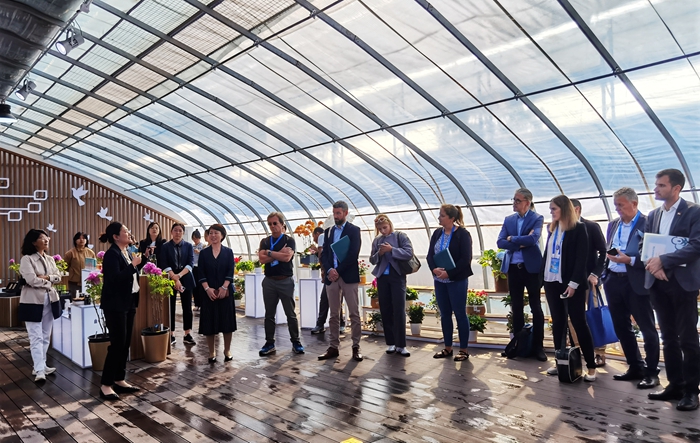 Nov 28, 2024Delegation of High-Level Science and Technology Managers from European countries Visited IVF
Nov 28, 2024Delegation of High-Level Science and Technology Managers from European countries Visited IVF -
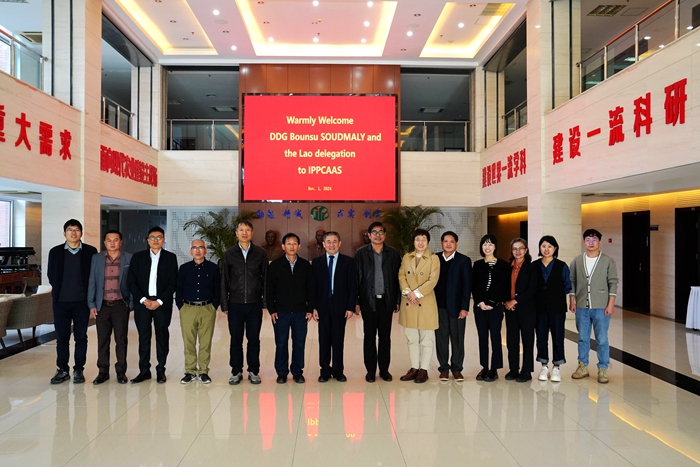 Nov 28, 2024The Lao PDR-China Joint Laboratory for Plant Protection holds technical seminar at IPPCAAS
Nov 28, 2024The Lao PDR-China Joint Laboratory for Plant Protection holds technical seminar at IPPCAAS -
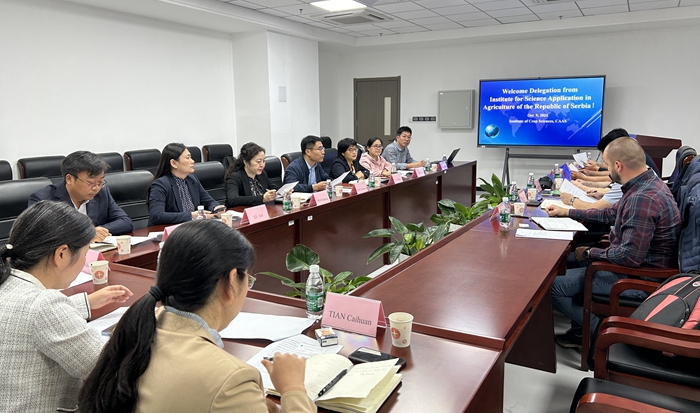 Nov 22, 2024Director Stanković and his delegation from the Institute of Agricultural Sciences and Applications of the Republic of Serbia visited ICS
Nov 22, 2024Director Stanković and his delegation from the Institute of Agricultural Sciences and Applications of the Republic of Serbia visited ICS -
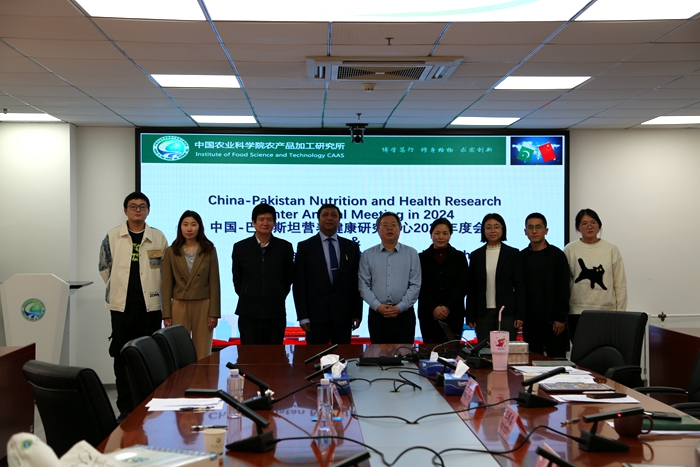 Nov 22, 2024Coordinator General of COMSTECH-OIC visited IFST-CAAS
Nov 22, 2024Coordinator General of COMSTECH-OIC visited IFST-CAAS -
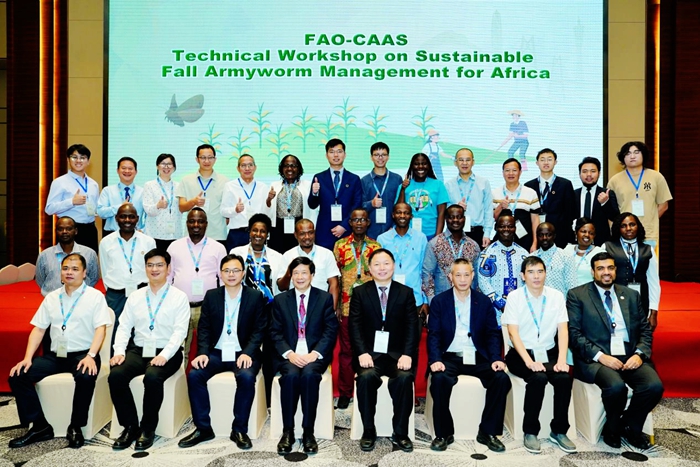 Nov 21, 2024IPPCAAS Successfully Organized the FAO-CAAS Technical Workshop on Sustainable Fall Armyworm Management for Africa in Guangdong
Nov 21, 2024IPPCAAS Successfully Organized the FAO-CAAS Technical Workshop on Sustainable Fall Armyworm Management for Africa in Guangdong
